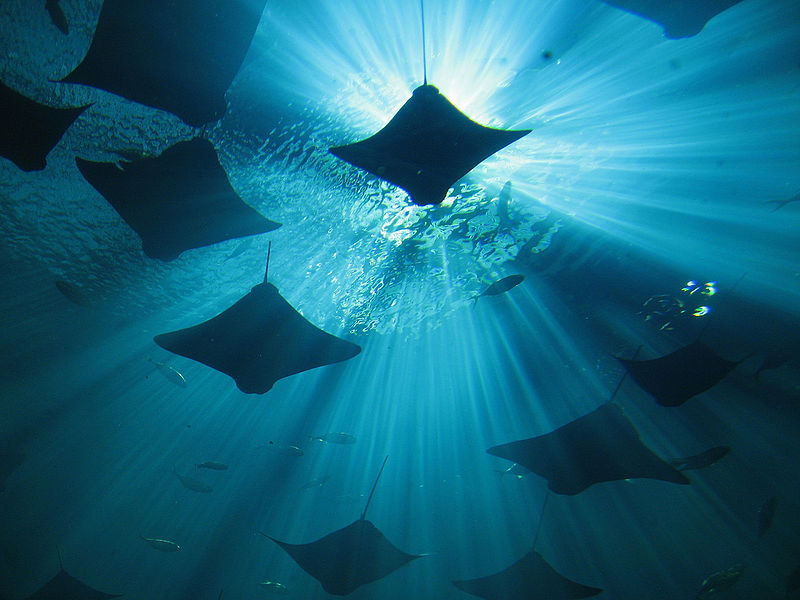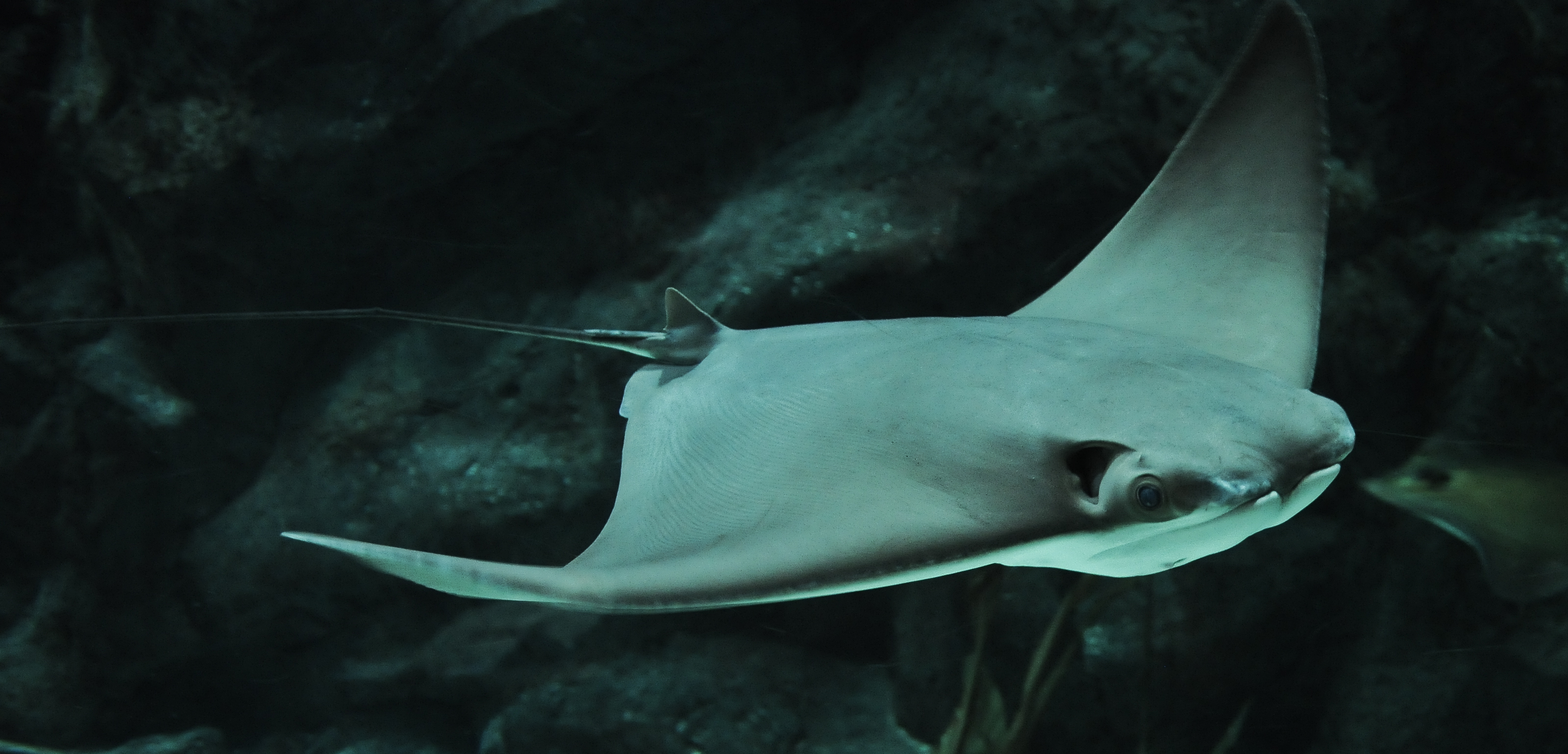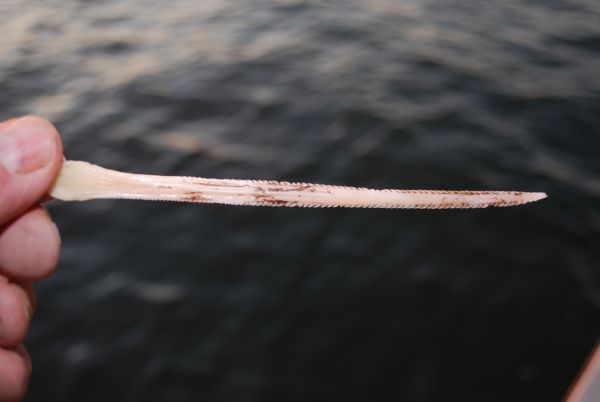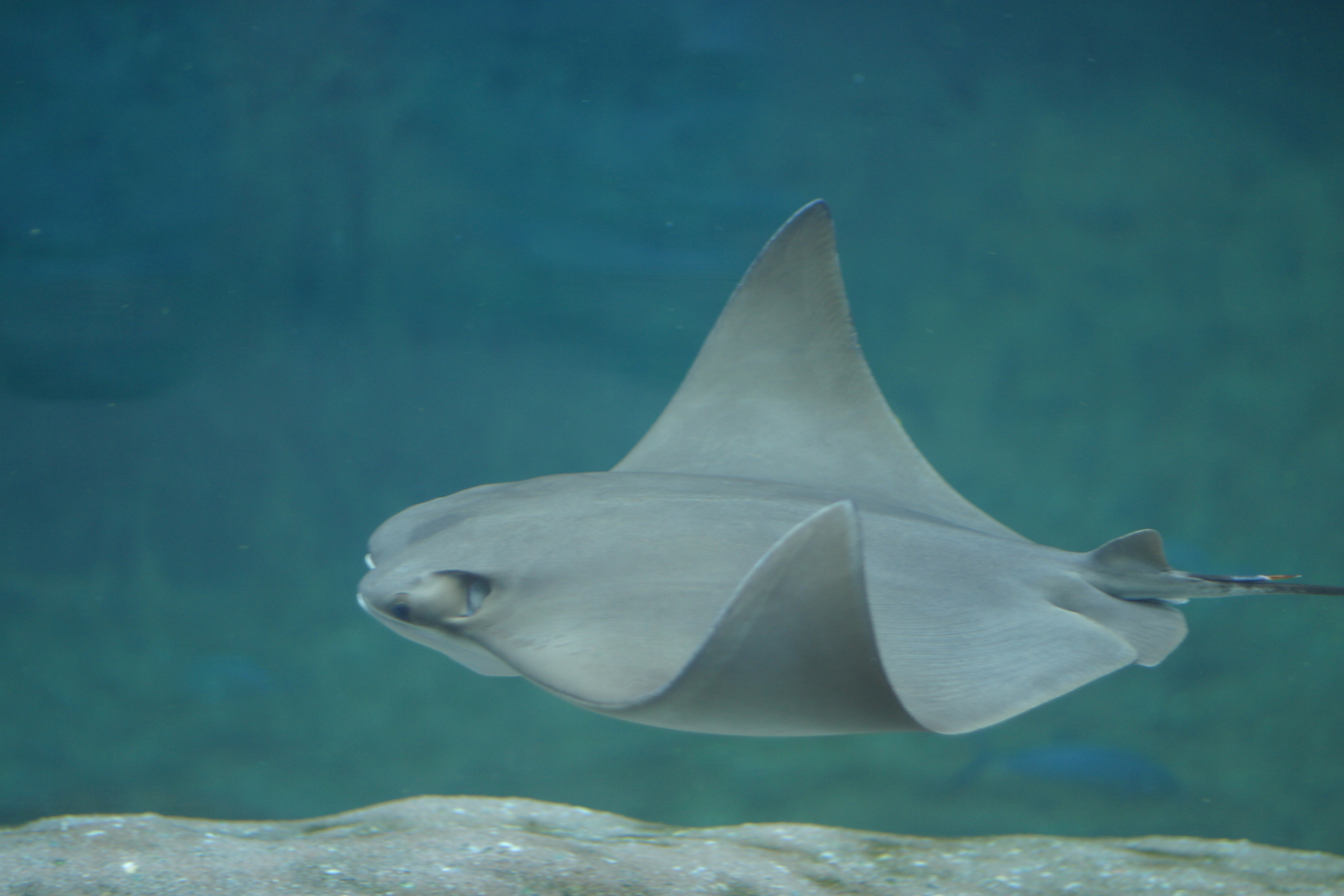Can a Cownose Ray Sting?

Five Basic Facts About Cownose Rays
Recently I had the good fortune to be paddling just past dinner time, in the cool twilight of sunset with some friends. We noticed fins sticking up out of the shallow waters of the Bay (Chesapeake Bay to be exact). Soon, we found ourselves in the middle of a nice school of cownose rays. They were just at the surface of the water, splishing and splashing their wings, while diving back down to blow and suck water to expose tasty clams. Several hit the bottom of my kayak. Now for some people this might be a terrifying sight, and at least one of our paddlers didn't find the "magic" in it that I did (though here's a video of what one looks like, imagine this magnified by about 50 rays).
After posting on social media I discovered a general fear of the gentle cownose rays that I didn't realize existed, specifically many people wanted to know, "can a cownose ray sting and hurt you?" To answer this questions I've prepare five basic facts for you.
There are several subspecies of cownose rays, but the most common here in the Chesapeake Bay, and in the Atlantic, is called Rhinoptera bonasus (rhine-Op-ter-a bon-ass-us), which essentially means "nose-wing-bison" in Latin. Unlike other rays it has a double-bump head that gives it shape like a cow nose. They're brown on top (light to dark brown) and light colored on bottom. They tend to like brackish water that is fairly shallow but they can also be found in deep oceans. Adults can grow up to 50 lbs and 3 feet from wing tip to wing tip.
So let's get to the "sting-y" part.

FACT 1: Cownose rays like to swim at the top of the water column and not the bottom.
Cownose rays feed on thin shelled clams, snails, crustaceans, crabs, and even small fish. To obtain their favorite, clams and other deep burrowing organisms, they use electrical reception (like sharks), locate small electrical impulses from their prey's heartbeat (yes, clams have heartbeats) and the use their pectoral fins to stir up sediment. They suck water and sediment through their gills and sweep the sediment behind them as they flap their fins. This helps "dig out" a depression where their prey is located. They can then suck the food into their mouth and grind it up. They have flat molar like teeth in two plates on the top and bottom of their mouth. This feeding behavior keeps them well away from where people walk, because they are at the top or middle of the water column, not on the bottom or buried in sand like other rays. Thus they are very difficult to step on and their splashing fins often give them away as being present (and often gets them mistaken for sharks!).
FACT 2: Cownose rays have barbs that are not easy to get to.
The tail of a cownose ray is roundish and about twice as long as its body from vent to tip. Rays can have one or two spines, but in cownose rays it's just one. Their spine is close to the body and is located at the base of the dorsal fins. It is about 2-4" long, resting along the thickened base of the tail. This location is much harder to step on or accidentally brush against than the tails of other species that have spines farther down. Because of where they swim and hang-out you'd have to work pretty hard to get a cownose ray to sting you.

FACT 3: Cownose rays do have spines.
The spines of cownose rays are made up of vasodentin, a cartelagenous (cart-a-lag-uh-nous) substance and covered by a layer of skin called the integumentary sheath (the bit that carries the venom). Each barb has small teeth around the edges which can be used in identifying cownose rays and differentiating them from other species. The tip of the spine curves toward rear of rump of the ray slightly and it is constantly growing and/or breaking off like fingernails or shark teeth.

FACT 4: Cownose rays have venom, but their stinger is attached and they don't shoot venom.
The spine of cownose rays has a bottom groove down which the toxins and mucous from the venom glands flows. Cownose rays have venom glands. The venom is secreted through epithelial (skin) cells that secrete mucus. This does not mean that cownose rays can shoot venom, it's more of a slimy ooze. When the barb is thrust into a person's skin the epithelial cells break open and oozing the venomous mucus into the wound.
Venom is injected by the spine, but sometimes the skin sheath wears off and you'll see a bare spine. The spine can still cause damage, but without the venomous skin sheath there is no venom. Remember, cownose rays are venomous, not poisonous. The spine tips can break off, which can lead to infection if they do sting you or inject you, but they aren't like bees and don't leave stingers behind on purpose.
Most stings occur because of rough handling of the ray or being caught and trapped. The venom is quite painful, and can be debilitating, but stings are rare. I've read that hot water helps to denature the venom, but need some back-up research on that (anyone care to share?).

FACT 5: Cownose rays are docile.
Cownose rays are one of the most docile species of ray, which is why they are often used in touch tanks and aquariums. They are also very abundant. You have nothing to fear if you give them respect and distance. They will not chase or attack you. They are wild animals that just want to be left alone, and like any wild animal they will use their defenses if provoked or captured, but they'd prefer not to.
I hope this gives you a more complete picture of cownose rays and answers the question, "can a cownose ray hurt me?" Yes, they have barbs and venom, but no they don't want to hurt you and won't do it on purpose if you give them respect and distance. They are hard to disturb and difficult to step on because of where they live in the water column. So enjoy them when you see them, respect their right to make a living and be amazed at how truly beautiful they really are.

